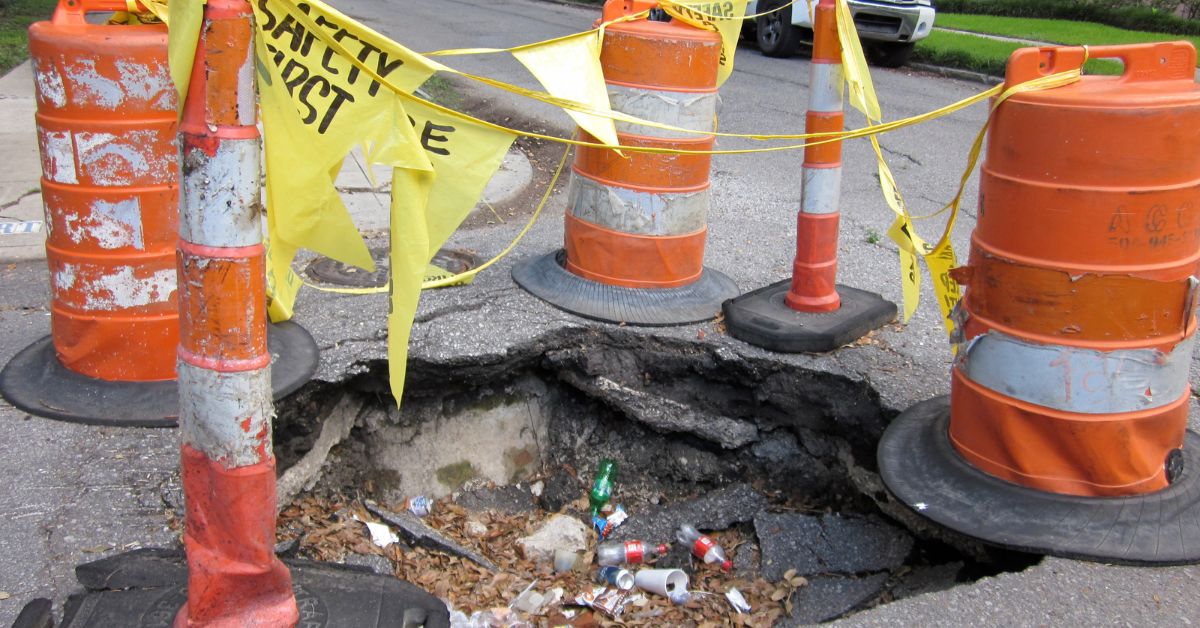Are you fed up with facing the potholes on your pavement? We’ve all experienced the frustration of driving on a road filled with caves. Not only can they damage our vehicles, but they also pose a safety hazard to drivers and boring alike. Fortunately, there are steps we can consider to prevent potholes from forming in the first place.
As per data from Pothole.info, 63% of Americans don’t have the cash to pay for Pothole repairs. Isn’t it a good idea to repair potholes immediately until you have to charge more?
If you have too many problems because of holes, various Pothole repair methods are available. Make sure to choose the best one that meets your requirements!
Evergreen Pothole Repair Methods
Several methods are used to repair Potholes, each with advantages and suitability based on factors such as the size and severity of the pothole, available resources, and local climate conditions. Look at below for some standard Pothole repair methods:
Patching
One standard method for fixing Potholes is patching. This involves filling the hole with a mixture of asphalt and aggregate and then compacting it with a roller. You can use this technique because it’s effective for repairing small to medium-sized Potholes, but it may not be suitable for larger ones.
To prevent further damage, you must ensure the patch is applied evenly and compacted correctly. Treatments like this don’t strengthen the road but help keep the roadbed underneath from getting too wet.
Coatings
Coatings can be an effective method when it comes to solutions to potholes. One option is to use an asphalt-based coating that can be poured into the pothole and then smoothed out. Another option is a cold patch coating, which can be applied without heating equipment.
Both coatings can provide a quick and easy solution for repairing potholes, but make sure that the coating is durable and long-lasting so you don’t need to repair it quickly. To avoid accidents and injuries, you should also follow proper safety measures when repairing Potholes.
Reconstruction
Reconstruction and dig-outs involve digging up and rebuilding the damaged roadbed. You’ll find it a more expensive and time-consuming process than other pavement repair methods.
The process typically includes removing the deteriorated pavement and underlying layers and then constructing a new roadbed and surface. Reconstruction is often necessary for severe Potholes in roads or when the existing pavement is in poor condition.
Crack Seal Off
Crack sealing and slurry sealing is one of the solutions to potholes and is also used to prevent water from getting into small cracks in the road surface. These treatments don’t make the road stronger, but they help protect the foundation of the road from getting wet and damaged. Each year, the majority of street repair teams tar seal roads with more than 20 tonnes of material. They also use slurry sealing on several dozen streets annually.
Understand What Causes Potholes
Potholes in roads occur when the upper layer of the road and the underlying base or sub-base cannot withstand the weight of the vehicles that drive over them. Here are the detailed steps that can cause Potholes:
- Freezing and Thawing: In colder regions, the freezing and thawing of water is a significant cause of Potholes. When water trapped in the pavement freezes, it expands, creating additional pressure on the surrounding road materials. As the ice melts, it leaves voids in the pavement, weakening and eventually collapsing.
- Water: The leading cause of potholes is water. When water seeps into the pavement, it weakens the surface and makes it more susceptible to damage. The water freezes and expands as the temperature is colder, causing the pavement to crack.
- Poor Maintenance: If roads are not properly maintained, small cracks can become larger ones, eventually leading to potholes. Regular maintenance, such as filling in cracks and resurfacing, can help prevent potholes from forming.
- Traffic: The weight of vehicles can also contribute to the formation of potholes. As cars and trucks drive over weakened pavement, it can cause the surface to break apart and form potholes.
- Age: Over time, pavement naturally begins to deteriorate and weaken. As it ages, it becomes more prone to cracking and breaking, which can lead to potholes forming.
Wrap Up!
Lastly, preventing Potholes is a crucial aspect of road maintenance that can save drivers from costly repairs and accidents. Regular inspections and timely repairs, proper drainage systems, and the use of durable materials can go a long way in preventing Potholes.
Additionally, drivers can also do their part by avoiding excessive speeds and heavy loads, which can protect them from future damage to the road surface. You’ve also avail the option of Asphalt Repair Texas no matter if you need road repair, parking lot recurring, or driveway widening; our team is an expert in all delivering perfection and first-class services. Don’t waste your time; it’s time to start work on your Potholes as soon as possible.
FAQs
What is an easy solution for fixing Potholes?
Cold-patch materials, like PatchMaster, are commonly used to fix potholes. They are easy to work with, cost-effective, and create long-lasting repairs.
What are the common causes of Potholes?
Potholes are created by three things: cracks in the road, water, and traffic. First, tiny cracks appear on the road surface and expand over time with the action of traffic. Water also enters through these cracks, which makes the situation worse. In colder areas, the water can freeze, making the cracks even larger when it thaws.
What is the best material to fill Potholes?
Well, you will see so many materials to fill the Potholes, but the most useful are Asphalt, Concrete, Loose Gravel, and Permeable Pavers. It’s up to you; just use whatever suits your requirements.
Why is it essential to avoid Potholes?
Potholes can cause different problems with your tires when you drive over them. It can lead to tire damage like blowouts or misalignment, which can make your vehicle unsafe to drive. If you accidentally hit a pothole, stop and check your tire for any signs of damage.






